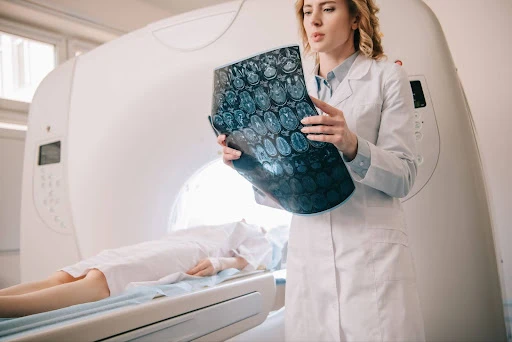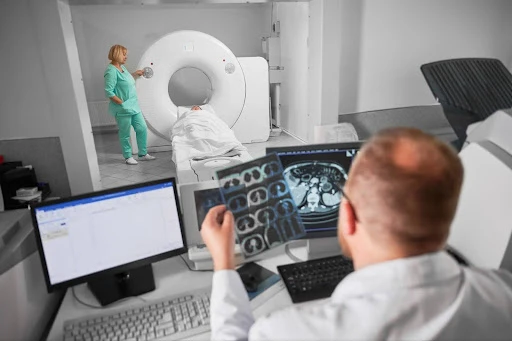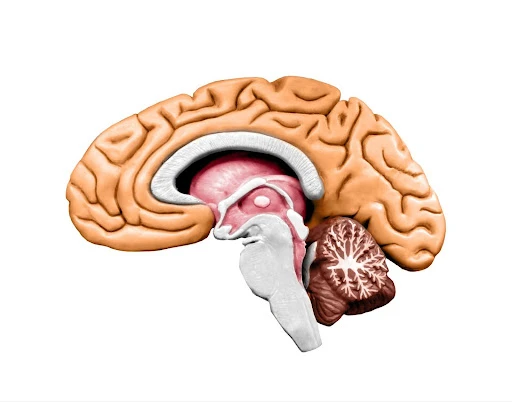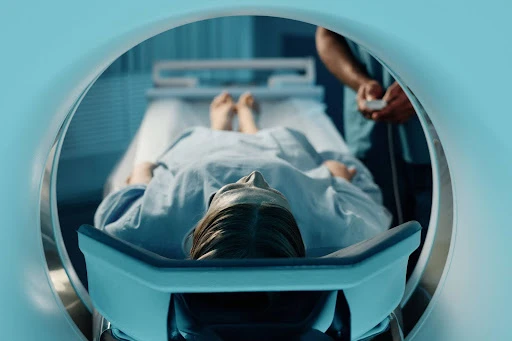Full-Body MRI Scans: The Latest Wellness Status Symbol and What It Means for Your Pineal Gland

Hey there,
Wellness trends come and go…
But some are making a huge splash in the world of health and self-care.
The latest? Full-body MRI scans.
Yep, we’re talking about stepping into a high-tech machine for a head-to-toe health check…

Costing thousands of dollars.
It’s being hailed as the ultimate preventive health measure…
And it’s quickly becoming a wellness status symbol for those chasing peace of mind…
Or just wanting to show off their commitment to longevity.
But are these scans worth the hype?
What’s driving this trend, and what does the medical community really think about it?
Most importantly, how does this all tie back to the pineal gland, your third eye, and the broader concept of wellness?
Let’s dive into the fascinating world of full-body MRIs, explore the motivations behind their rise…
And discuss how they fit into a holistic approach to health and spirituality.
What Are Full-Body MRI Scans?
First, let’s break it down.
Magnetic resonance imaging (MRI) uses powerful magnets and radio waves to create detailed images of the body’s internal structures.
Traditionally, MRIs are used to diagnose specific conditions…
Like identifying brain tumors, joint injuries, or spinal issues.
Full-body MRI scans, on the other hand, take things to the next level.

They’re marketed as a comprehensive check-up, scanning everything from your brain to your organs to your bones…
Even when there are no symptoms to address.
The promise?
To catch potential health issues early, giving you the chance to prevent disease before it starts.
It sounds great in theory…
But like any trend, it’s not without controversy.
Why Are Full-Body MRIs So Popular?
There are a few key reasons why full-body MRIs have become the latest must-have in the wellness world:
1. The Desire for Control
In a world where health can feel unpredictable…
The idea of knowing everything going on inside your body is incredibly appealing.
For many, these scans offer a sense of control and reassurance.
2. The “Status Symbol” Factor
Let’s be real:
Wellness has become a way for some people to show their success and sophistication.
Full-body MRIs, with their high price tags and cutting-edge technology, fit right into this category.
3. The Fear of the Unknown
The “what if” factor is powerful.
Even if you feel perfectly healthy, the fear of undiagnosed conditions can drive people to seek out these scans.
4. The Promise of Longevity
For those obsessed with biohacking and living longer…
Full-body MRIs are seen as an essential tool for extending lifespan and optimizing health.
What Does the Medical Community Say?
Here’s where things get interesting.
While full-body MRIs are appealing, many healthcare professionals are cautious about their widespread use.
Here’s why:
1. High Costs, Questionable Benefits
These scans are expensive…
They range from $1,000 to $3,000 per session…
And aren’t typically covered by insurance.
Critics argue that the costs don’t always justify the benefits, especially if you’re healthy and symptom-free.
2. False Positives and Anxiety
MRIs are incredibly sensitive, which means they can pick up on tiny anomalies that might not be dangerous at all.
This can lead to unnecessary follow-ups, biopsies…
And even anxiety about conditions that might never affect your health.
3. Lack of Evidence
While early detection is valuable…
There’s limited evidence to suggest that full-body MRIs significantly improve long-term health outcomes for the general population.
The Pineal Gland Connection: Looking Beyond the Physical
So, how does this all tie back to the pineal gland? Great question.
Full-body MRIs focus on the physical body…
Identifying structural issues, abnormalities, and potential risks.
But true wellness encompasses more than what’s happening in your organs or bones.
It also deals with what’s happening in your mind, your spirit, and, yes, your pineal gland.

Your pineal gland, AKA the third eye…
Plays a key role in regulating your circadian rhythms, intuition, and connection to higher states of consciousness.
In the world of spiritual wellness…
The pineal gland is considered the gateway to enlightenment and inner clarity.
Here’s the thing:
No MRI can scan your energy levels, your emotional health, or your spiritual alignment.
While these scans might catch a physical issue, they don’t tell the full story of your well-being.
That’s where holistic practices are so important.
Practices that balance the physical with the emotional and spiritual.
Balancing Technology and Spirituality
So, how do you balance the allure of advanced medical technology like full-body MRIs with the deeper…
More intuitive aspects of wellness?
Here’s a roadmap to keep both in harmony:
1. Prioritize Preventive Care
Before jumping to a full-body MRI, focus on the basics.
Eat a nutrient-rich diet, exercise regularly, and manage stress through practices like meditation and yoga.
These foundational habits can prevent many health issues before they start.
2. Keep Your Pineal Gland Healthy
Your pineal gland is a powerful tool for maintaining balance in your body and mind.
Support it with these practices:
- Avoid fluoride in your water and toothpaste.
- Eat detoxifying foods like chlorella, cilantro, and turmeric.
- Practice third-eye meditations to enhance your intuition and clarity.
3. Use Technology as a Tool, Not a Crutch
Technology like full-body MRIs can be a valuable tool, but it’s not a substitute for holistic wellness.
Use it wisely, and don’t let it overshadow the importance of connecting with your body’s innate wisdom.
4. Trust Your Intuition
Your pineal gland enhances your ability to tune into your body’s signals.
If something feels off, listen to your intuition and seek medical advice when necessary.
But don’t rely solely on external scans to tell you how you’re doing.
Should You Get a Full-Body MRI?
If you’re considering a full-body MRI, here are a few questions to ask yourself:
- What’s my motivation? Are you seeking peace of mind, or are you driven by fear?
Understanding your “why” can help you make a more grounded decision. - What’s my current health status?
If you’re healthy and symptom-free…
It might be worth focusing on preventive care rather than jumping straight to an MRI. - Am I balancing this with holistic practices?
A full-body MRI can give you valuable insights into your physical health…
But it’s just one piece of the puzzle.
Make sure you’re also addressing your emotional, mental, and spiritual wellness.
The Bigger Picture: Wellness Beyond the Scan
At the end of the day, wellness is not something that a machine can tell you.
Wellness is a lifestyle that nourishes your body, mind, and soul.
While full-body MRIs are an intriguing tool…

They’re not the ultimate answer to health and longevity.
The real magic happens when you combine cutting-edge technology with ancient practices…
Self-awareness, and spiritual connection.
What’s Your Take on Full-Body MRIs?
Have you ever considered getting one? Or are you skeptical about the trend?
Hit reply and let me know!
I’d love to hear your thoughts and experiences.
See you next time,
Eric Thompson

